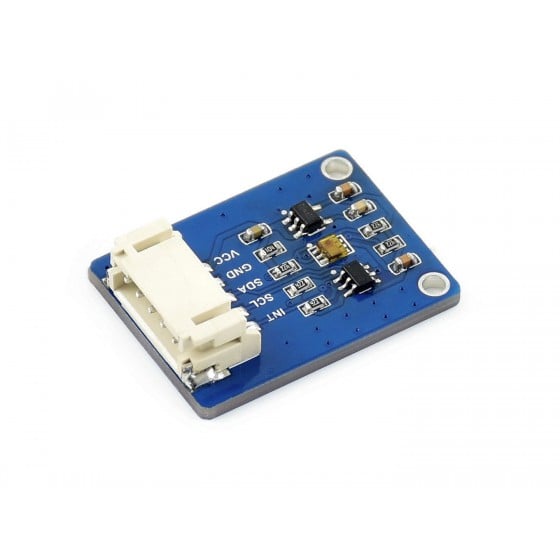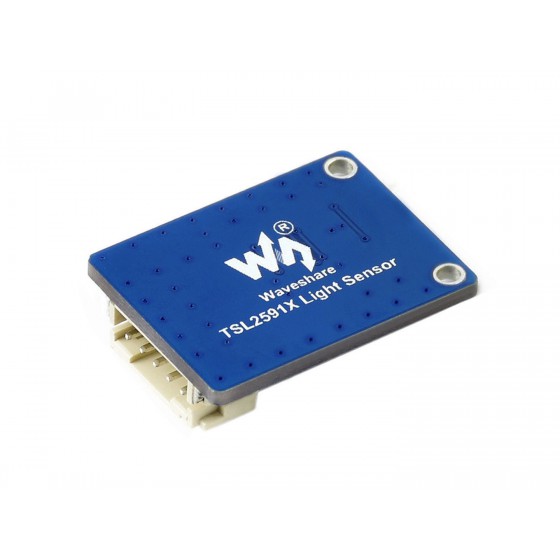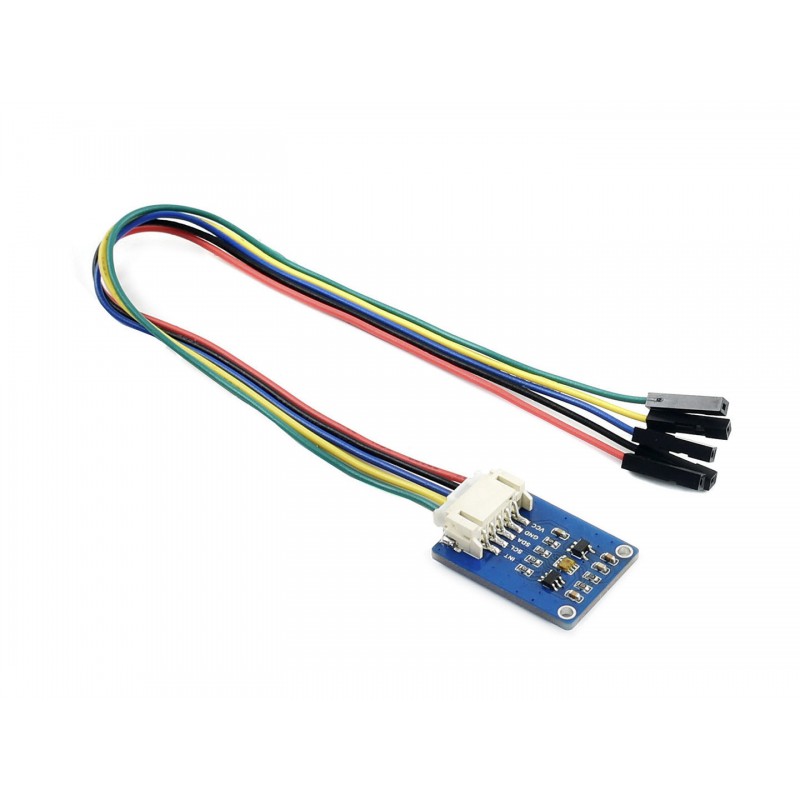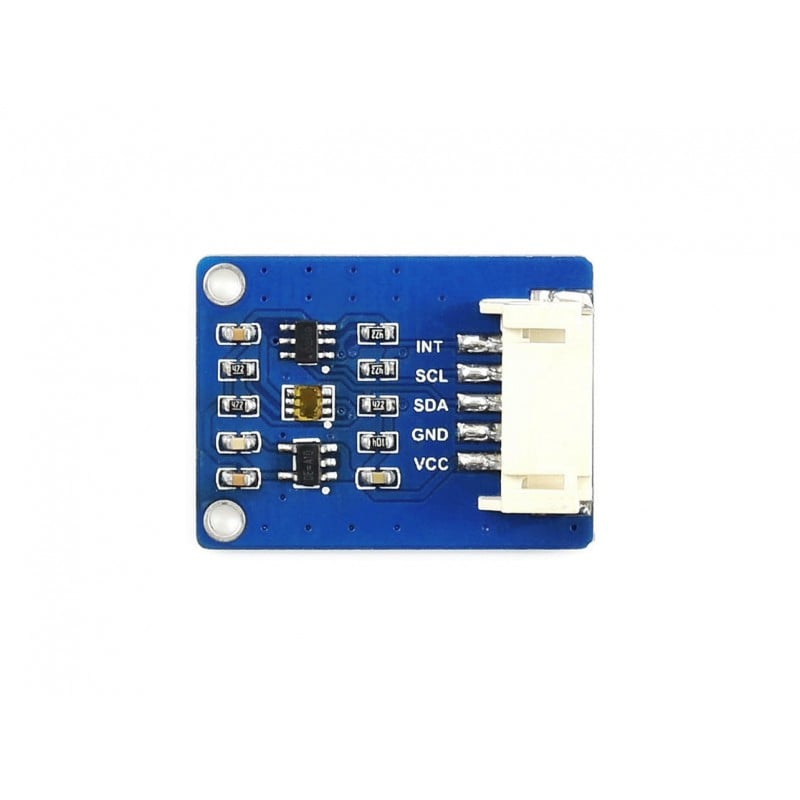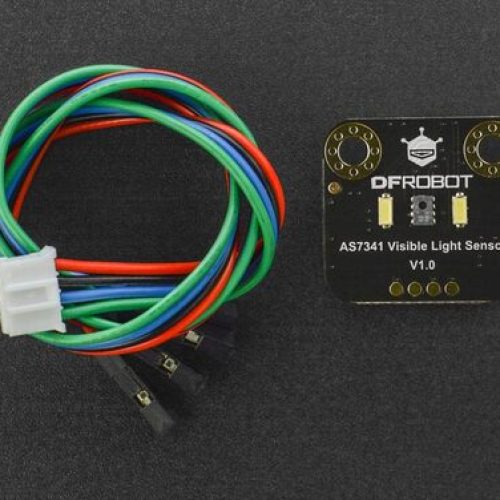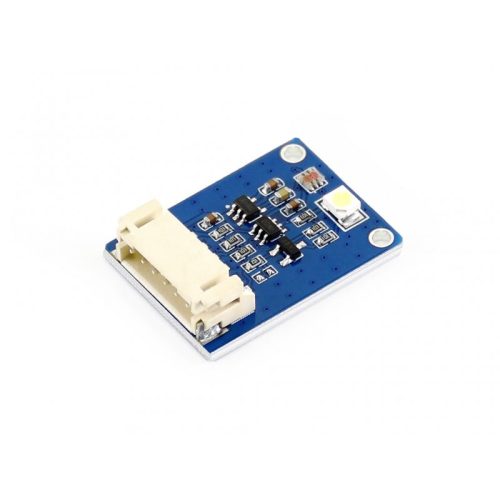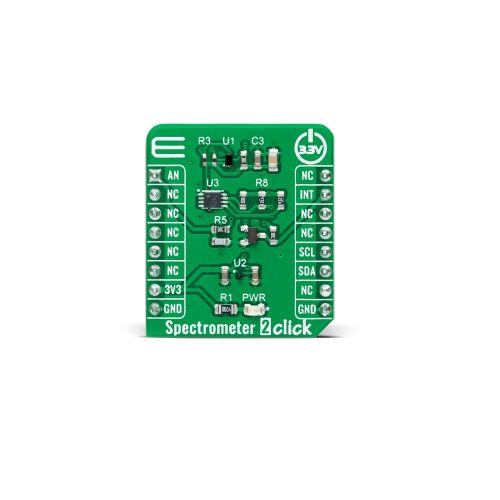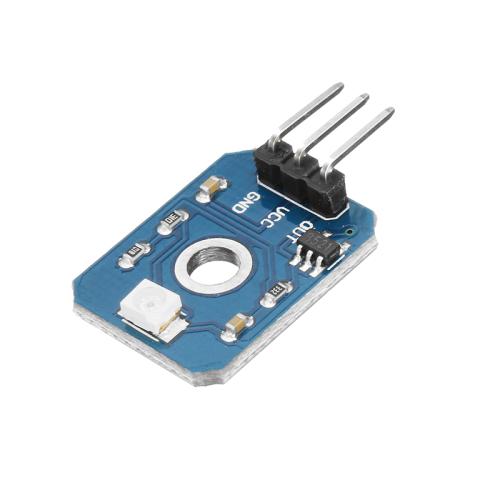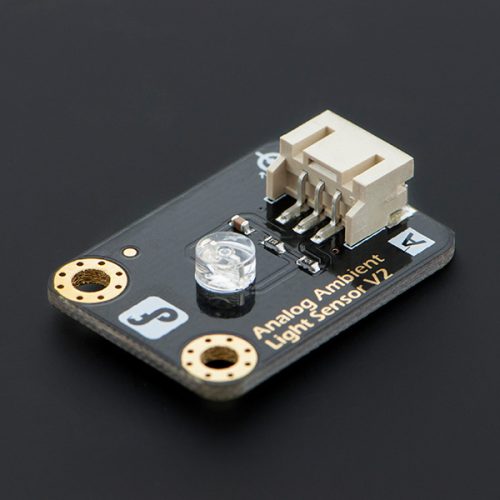Waveshare TSL25911 High Sensitivity Digital Ambient Light Sensor I2C Interface
₹329.00
- Supply voltage: 3.3 V to 5 V
- System: TSL25911FN
- Communication interface: I2C
- Interface address: fixed 0x29
- Measurement range: from 0 lx to 88000 lx
- Sensitivity: up to 188 ulx
- Dynamics: 600M:1
- The device is compatible with: Arduino, Raspberry Pi, STM32
Did you like this product? Add to favorites now and follow the product.
+91-7231900002 Connect on Whatsapp
Description
This is a high sensitivity digital ambient light sensor module based on TSL25911, features 600M:1 wide dynamic range, detects light intensity up to 88000Lux, controlled via I2C interface, low power consumption. It is capable of operating across various light environment.
Digital light intensity sensor from Waveshare. The module is based on TSL25911 chip, which enables detection of light intensity up to 88000 lx. The dynamic range is 600M:1. It is compatible with Arduinoand Raspberry Pi and uses I2C interface to communicate with the main module. It is used when working in different lighting conditions and has low power consumption.
The TSL2591 is a very-high sensitivity light-to-digital converter that transforms light intensity into a digital signal output capable of direct I²C interface. The device combines one
broadband photodiode (visible plus infrared) and one infrared-responding photodiode on a single CMOS integrated circuit. Two integrating ADCs convert the photodiode currents
into a digital output that represents the irradiance measured on each channel. This digital output can be input to a microprocessor where illuminance (ambient light level) in lux
is derived using an empirical formula to approximate the human eye response. The TSL2591 supports a traditional level style interrupt that remains asserted until the firmware clears it
Features:
- Adopts TSL25911FN, measures infrared plus visible light (wider range than TSL2561)
- Embedded ADC, direct light intensity signal output to I2C interface, less noise jamming
- High sensitivity up to 188uLux, wide dynamic range up to 600M:1
- Embedded infrared-responding photodiode, allows precise measuring even on strong infrared noise environment
- Provides interrupt output with programmable upper and lower thresholds
- Onboard voltage translator, compatible with 3.3V/5V operating voltage
- Comes with development resources and manual (examples for Raspberry Pi/Arduino/STM32)
Package Includes:
1 x TSL25911 Light Sensor
1 x PH2.0 5PIN wire
Additional information
| Light Sensor | TSL25911FN |
|---|---|
| Communication Interface | I2C (constant address: 0x29) |
| Effective Range | 0~88000Lux |
| Operating Voltage (VDC) | 3.3V/5V |
| Dimensional Accuracy (mm) | 27mm × 20mm |
| Mounting Holes Diameter (mm) | 2.0mm |


